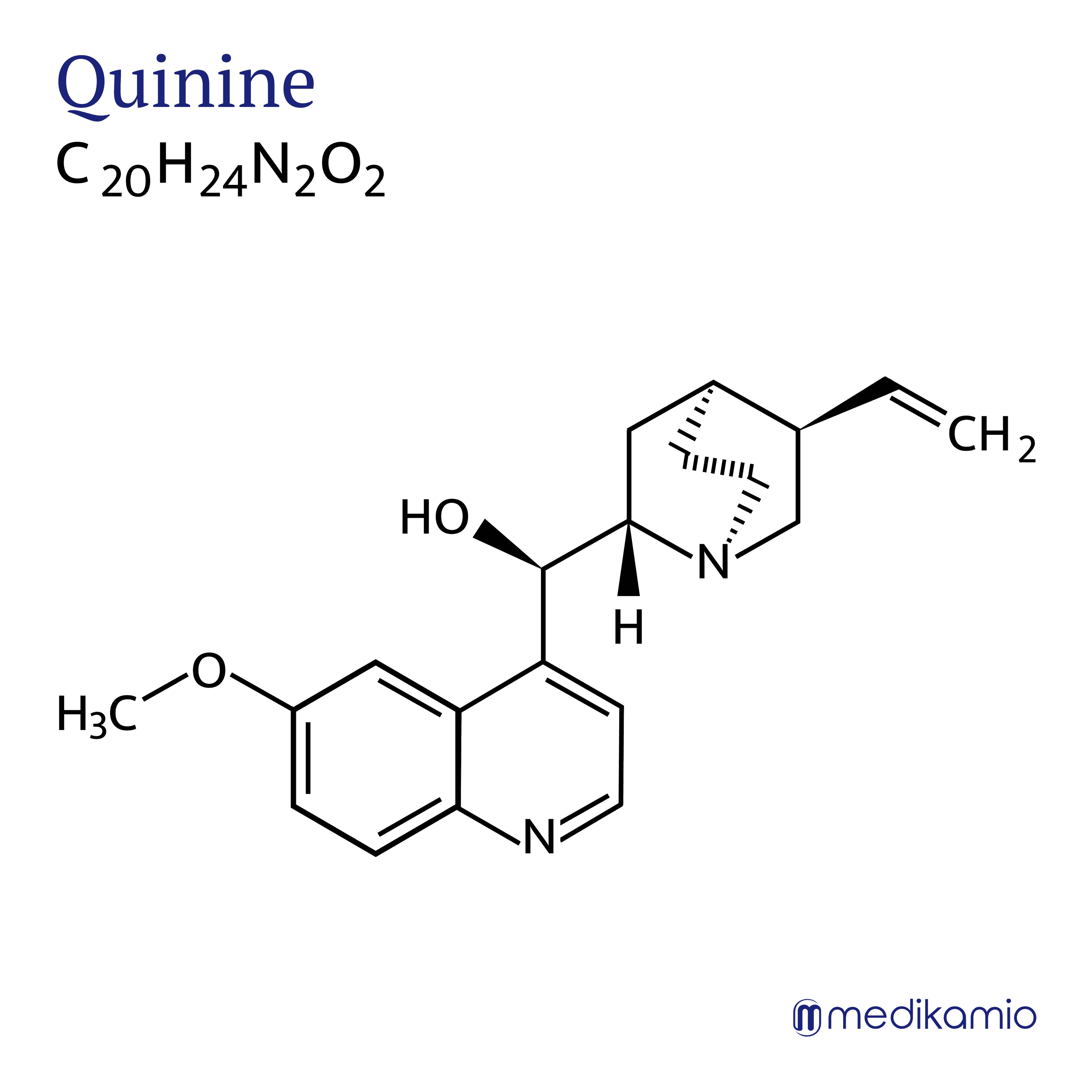Basics
Quinine is an active ingredient that acts against parasites (antiparasitic), has a muscle relaxing (muscle relaxant) and antipyretic (antipyretic) effect and belongs to the group of antimalarials. Quinine also has a mild analgesic effect. It is used to treat acute malaria attacks and calf cramps of unknown cause (idiopathic). Malaria is transmitted by parasites that enter the body through mosquito bites. Malaria is widespread in Africa, South America and South Asia. Quinine should not be taken to prevent malaria.
Quinine is also used in very small quantities as a bittering agent, for example in tonic water. Quinine is an alkaloid derivative obtained from the bark of the quinine tree. This group of alkaloids is very popular in medicine and is often used for pain therapy. The best-known representatives are morphine, opium, heroin and nicotine. The alkaloids are mainly found in plants. In pharmacy, a derivative is a derivative that is chemically related to a group or another active substance.
Quinine is controversial as a remedy for calf cramps and is therefore not approved in all countries.


